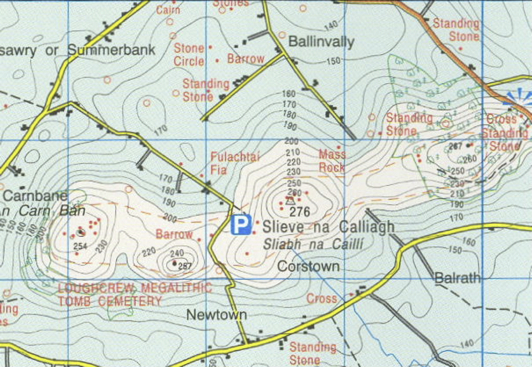Royal Canal Way
Work began on the construction of the 146 km long Royal Canal, to connect Ireland's capital city, Dublin, with the upper River Shannon in 1790, and the canal was completed in 1817. It operated in competition with the Grand Canal which ran an almost parallel route never more than 30 km to the south, and with the Grand, was made redundant by the advent of the railways in the mid-19th century. The canal was officially closed to all navigation in 1961, but like the Grand Canal, much of the Royal has been restored in recent decades, and the Royal Canal Way currently follows grassy towpaths, gravel and sometimes tarmac canal-side roads from the Dublin suburb of Ashtown 105 kilometres to the village of Abbeyshrule in County Longford. Some sections of tow path can be muddy. Further restoration will take the navigable canal and the walking route all the way to the Shannon. There is a good range of options for overnight accommodation along most of the route: it is, however, relatively easy to walk some sections and return to your starting point by public transport. Apart from the glorious, linear cordon of unspoilt countryside the route provides, there are a number of significant examples of late-eighteenth century industrial archaeology to admire along the way, including the Ryewater Aquaduct which takes the canal high over the Rye river, and which took six years to build.
Maps and other information
External Links
Trail Management
Waterways Ireland,
Floor 2 Block C,
Ashtowngate,
Dublin 15
Tel 01-8680148
Email: info@waterwaysireland.org
Facilities
Car parking
At Start - none
At End - on Street in Cloondara
9 kms or 12% of the Way follows local roads. There may be some waymarking issues at some points along the trail.
***Dogs under effective control allowed. Please clean up after your dog***

Map Guides
Guide to the Royal Canal of Ireland - The Waterways Service & Inland Waterways Association of Ireland.

OSI Maps

Public Transportation
At Start: Rail Check with: Iarnrod Eireann.
Bus Check With: Dublin Bus.
At End: Good bus service; Check with Bus Eireann.
. Rail Check with: Iarnrod Eireann.
Paul from Dublin
Katie Moore from Dublin
Aine from Dublin
ROBERT from United Kingdom
John a from Sligo
Paul from Dublin
A few points are worth mentioning to others looking to do it.
Most of the trail is good solid track and easy and quick to cycle on. However there are a few sections where it's better to take the road, as cycling on a rough grassy trail is draining. I'd skip from Castleknock to Leixlip (most of it is very poor, some hazardous); the section from Kilcock to Enfield; and the shorter section from Blackwater to Moyvalley (Fuery's pub).
Irish Waterways have done great work on the Royal Canal Way and hopefully these last few stretches will be done before long. It's a lovely trail and well worth doing.
Des from Dublin
After the recent good weather everything is very dry, so no issues on the unpaved sections.
Most bits are in good tarmac or blinded stone. Some sections (deep sinking, Kilcock to enfield, and a short section near Moyvalley ) are grass/dirt. Only the section near Moyvalley is impassable meaning a detour onto the road for about 2km, but they're actively working on it.
Great day, and the train back to Dublin is quite good too.
Padraic from Waterford
Seán from Dublin
The map of each section should show the length of the stage, in kms. This will help users who are not used to dealing with Ordinance Survey maps to plan their time.
Conor Molloy from Dublin